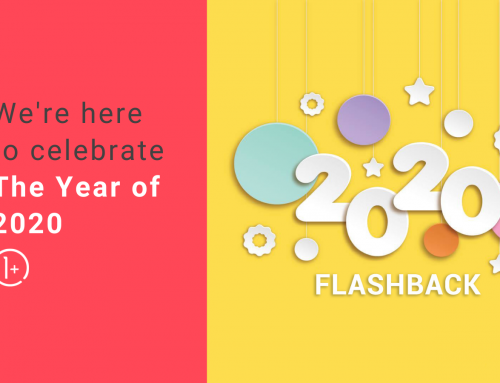- Establish the client’s needs by understanding the event description.
- Consider optimal times and locations for peak engagement and foot traffic.
- Consider the scope of the project, resources necessary.
- Assess your budget for profitability whilst suiting your client’s needs and expectations.
- Have you a safety strategy developed?
- Who are your third-party vendors?
Establish the client’s needs by understanding the event description
Understanding the event description by establishing clear, and thorough client needs will set you up for the best event possible.
When first negotiating and securing a client’s contract, begin to understand what the client wants to be achieved. Are they interested primarily in attendance? Is it visibility to a brand? Is this event held annually and the interest is purely to host a better party than the year prior?
This article is a bit dated, however, its evergreen content is highly relevant (hence the reason it comes up so easily in a google search). Here are 4 of the easiest questions you need to start understanding your client’s event planning needs.
- Why are you organising this event?
- Who are your targeted audiences?
- Where is this event being held?
- What are the dates and times of the event? (This leads us directly into the next step of this list.)
Consider optimal times and locations for peak engagement and foot traffic
Do you have a social media, or data analyst running demographics in the background? No, well, hire a team to do this. They’ll be able to see what you’re doing on the backside of your website, who’s coming to your site, and even who is showing an interest in the content you’re trying to sell or produce.
Not only will a data analyst tell you what’s happening in the background with your traffic, they’ll be able to offer key insights on your venue, the reputation, the catering services you’re looking at using, the music, and like-trends to establish the highest number of attendees.
If you have a data analyst on staff, work with a statistics’ SaaS company or search with a database of potential companies, something to the likes of eMetrics.org. You’ll find stacks of people, organisations, software tools, and educational material relevant to your event-planning needs.
Consider the scope of your event management project and the resources necessary to manage it
When we plan for project scope planning we ensure all the work needed to successfully meet the project objectives is noted and detailed. You’ll want a clear picture of all the work that needs to happen on your project. During project progression, you’ll be able to efficaciously manage your schedules, calendars, collaborative workflow, and report back to the client in, consistent, transparent, and a timely manner.
Consider functional and non-functional elements to determine the scope of your event management project.
Functional requirements describe the elements of the finished product in non-technical and easy to digest language. The client should participate in ensuring these elements are accurate and reflect their needs. (If anyone could jump on the project last minute and understand the functional elements required to meet your project’s end goals, then you’re on the right track.) Functional requirements are everything involved in the final product.
Examples of functional elements:
- Venue dressing for a Christmas party: tablecloths, furniture (i.e. tables and chairs), cater hire noting the required items included with cater hire are built into the service napkins, cutlery, dishes, plates, cups, glasses – these basics do not need to be detailed in the functional requirements list but can be bulked labelled as “cater hire”), printing costs to advertise the event, printing costs to decorate with paper materials, decoration costs, etc…
Non-functional requirements aid in the efficacy of delivery. Their purpose is to restrict the number of solutions that will meet a set of requirements.
For example, if you need to buy a vehicle to transport your goods more effectively, this your vehicle is a non-functional requirement. The vehicle would help you in the long run on time management, it would reduce shipping costs, and it can be transferred and utilised to other projects. Non-functional requirements can be split into two types: performance and development.
Assess your budget for profitability whilst suiting your client’s needs and wants
Ask yourself the following set of questions:
- What’s the client’s budget?
- What’s your estimated budget?
- What are your profit margins?
- Are you researching competitive third-party vendors to keep your expenses and charges low against an industry standard?
- What is your final budget breakdown with confirmed, invoicing quotes?
- Have you considered fluctuations with each changing year (if the contract extends beyond 12 months)?
- Have you considered non-billable expenses?
“(Non-billable expenses) should be treated and recorded as direct costs (but not billed) so that the true cost and profitability of the task can be reflected. Essentially, these non-billable costs get the appropriate burdens, just like a billable cost. … a direct cost can be either billable or non-billable, but a non-billable cost doesn’t make it an indirect cost.” (scsconsultants.com)
Have you a safety strategy developed?
Event plans must consider safety. This means developing a general policy for safety with due regards to the guidelines and codes set out in the following legislation where relevant:
- The Code of Practice for Safety at Outdoor Pop Concerts Department of Education 1996
- Code of Practice for Management of Fire Safety in Places of Assembly, Department of the Environment 1989
- Fire Safety in Places of Assembly (Ease of Escape) Regulations, Department of the Environment 1985
Events planned and organised will need to ensure compliance is achieved with the requirements of the Fire Services Act 1981 & 2003 and the Fire Safety in Places of Assembly (Ease of Escape) Regulations 1985.
Remember to consider the following high-risk areas during the initial stages of event planning for your DPIA and risk assessments:
- Persons with primary responsibility for event safety
- Child protection
- Lost child policy
- Found child policy
- Medical
- Power supply
- Footpaths and layout
Who are your third-party vendors?
When working with a third-party vendor do your research. Know who you’re working with and understand realistic expectations on deliverability. Ask the following questions:
- How transparent are they in reporting and keeping up with communication?
- How automated are their processing systems?
- Do they have a GDPR compliance statement?
- Do you understand your part in their compliance statement?
- In the event that your vendor is unable to deliver, do you have a back-up ready?
- Are you capable of leveraging the full functionality of a single vendor (perhaps 1 offers the services of 2)?
- Have you considered the value of keeping a relationship with this vendor (time savings, personnel costs, etc.)?
Some statistics that come out of third-party B2B relationships:
- 75 % of companies lack accurate contact information for the majority of their third-party suppliers.
- 44% of company data breaches involve third parties.
- Only 52% of companies have security standards for third-parties.
- On average, organisations spent $10 million responding to third-party breaches over a 12-month period in 2016.
For a more detailed and comprehensive report have a look through Deloitte’s third-party governance and risk management 2016 report.







Leave A Comment